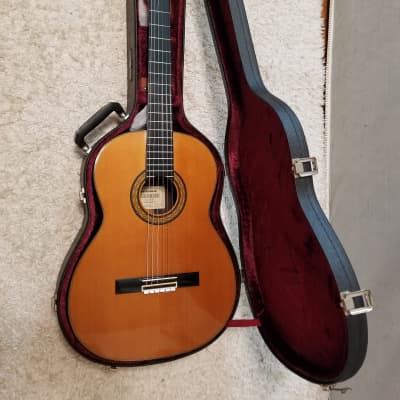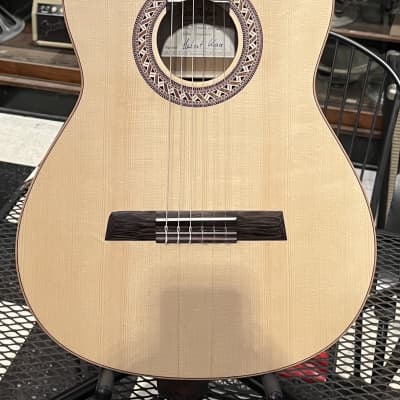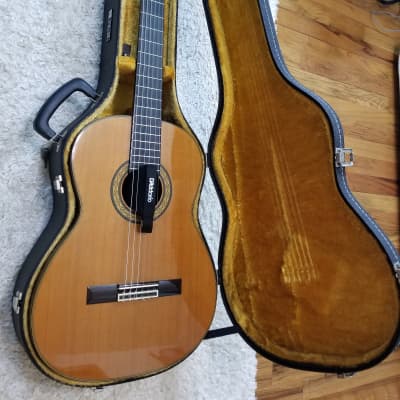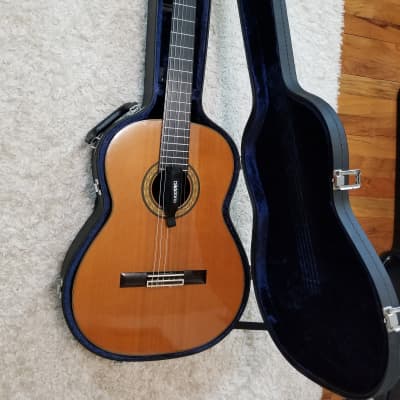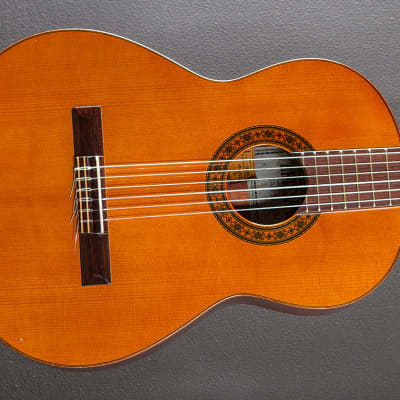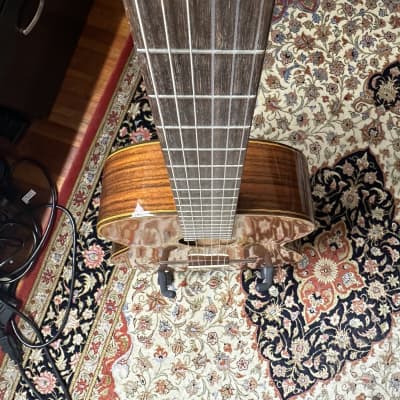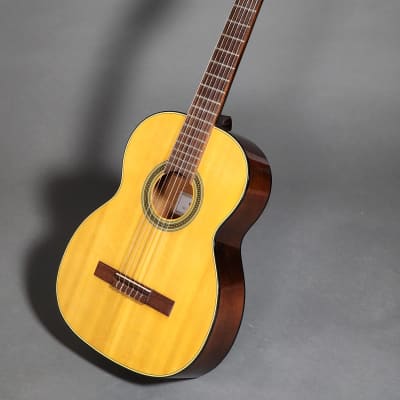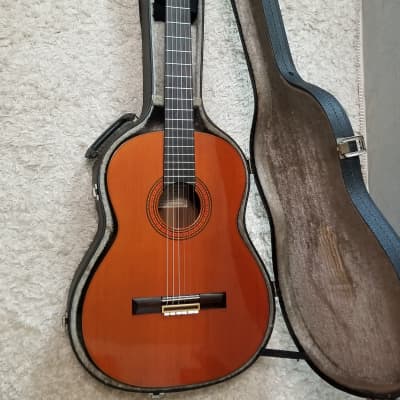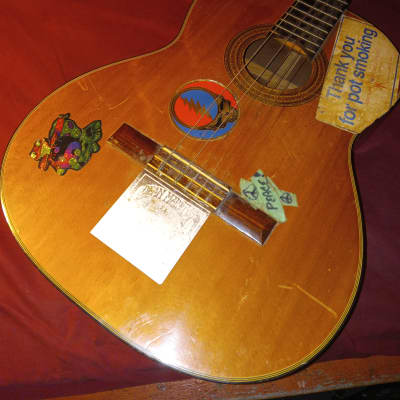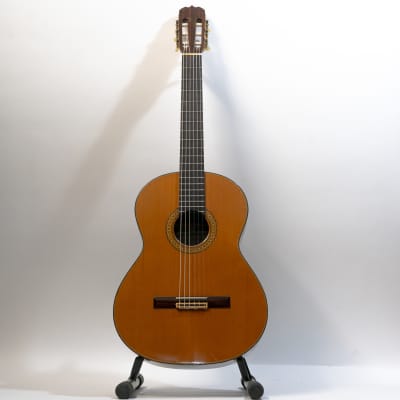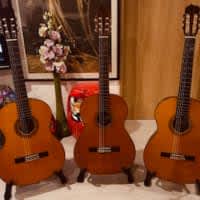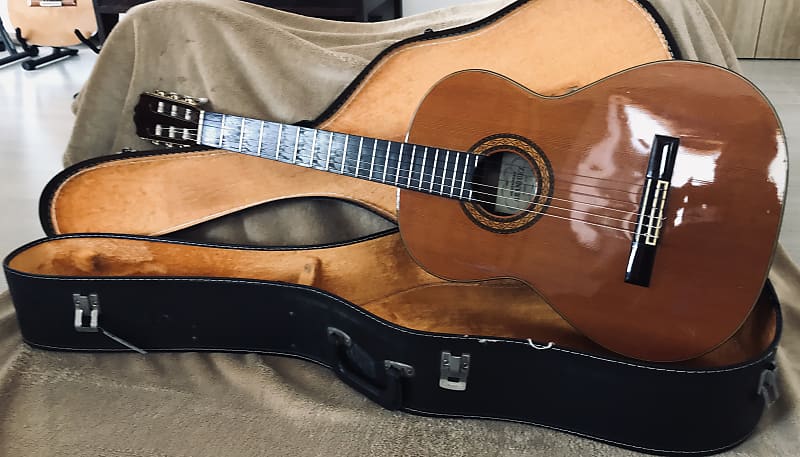

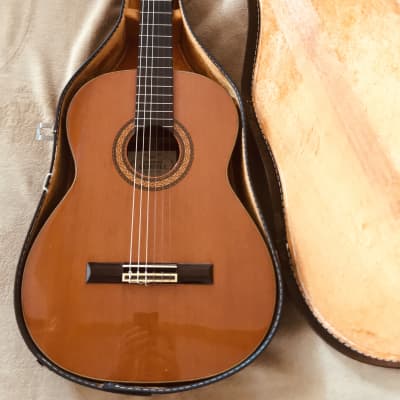
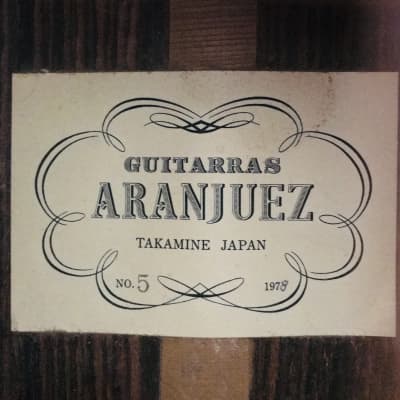
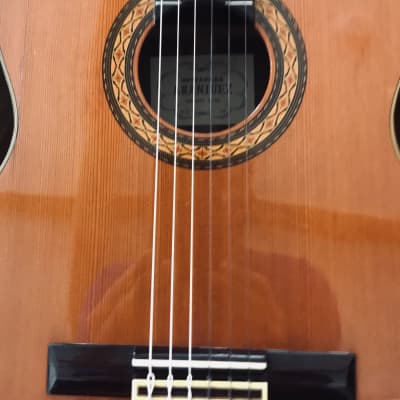
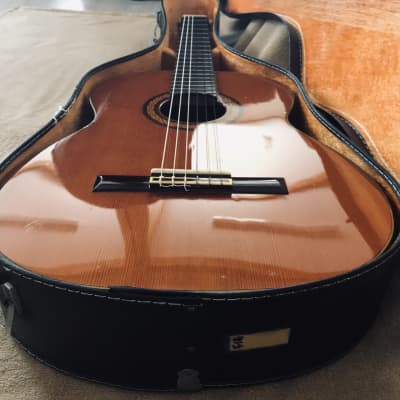
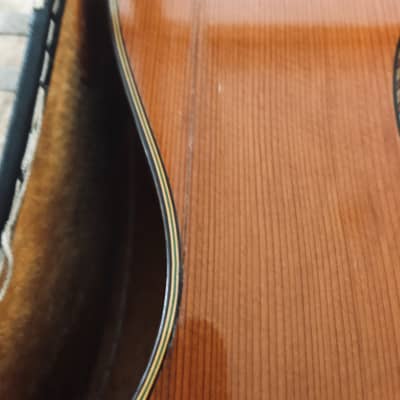
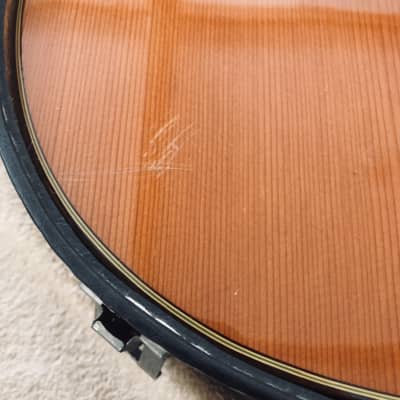
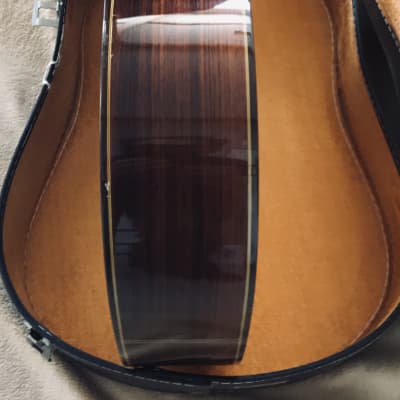
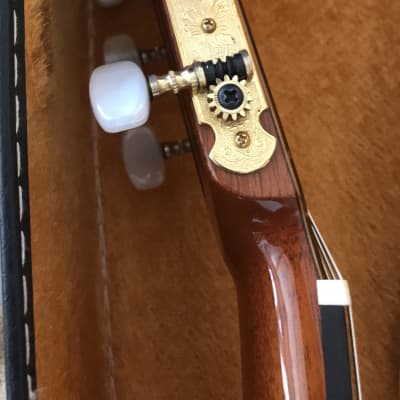
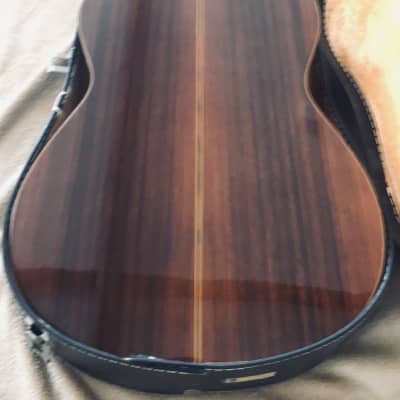
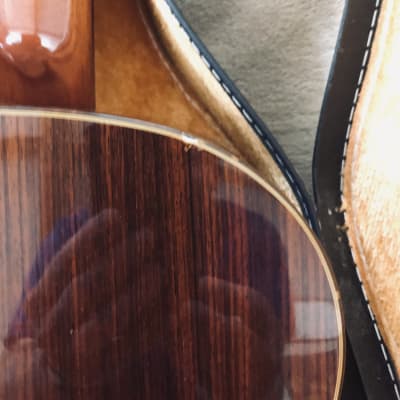
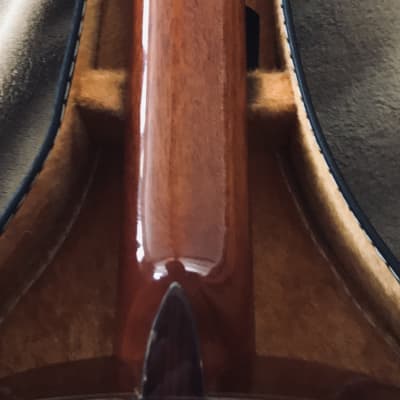
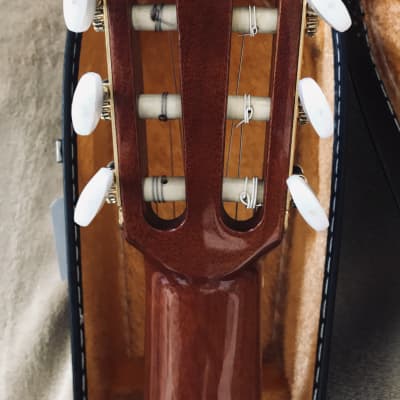
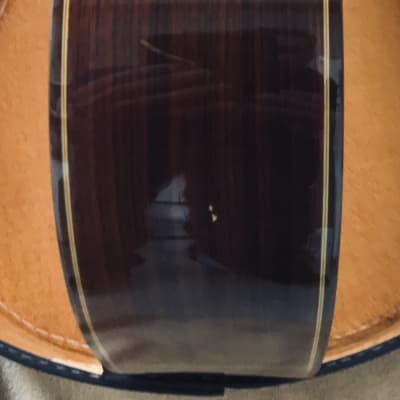
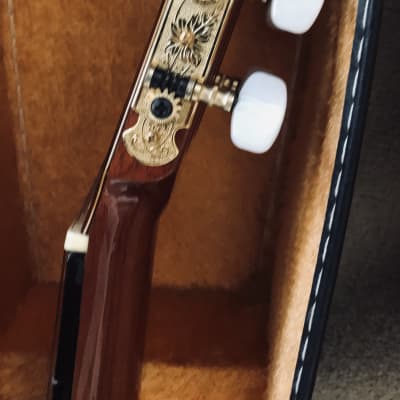
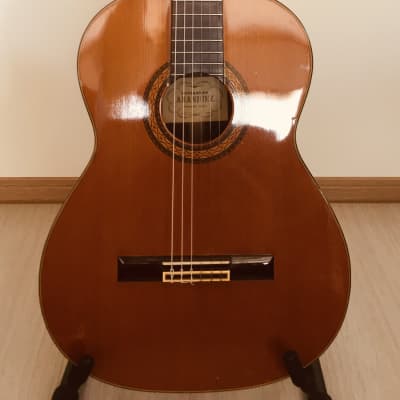
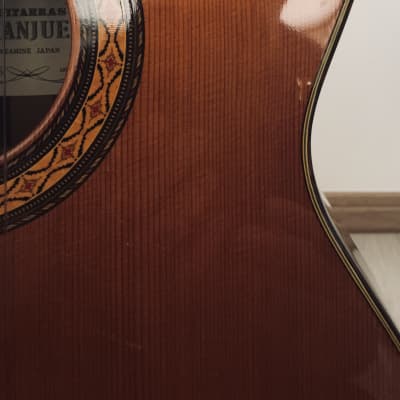
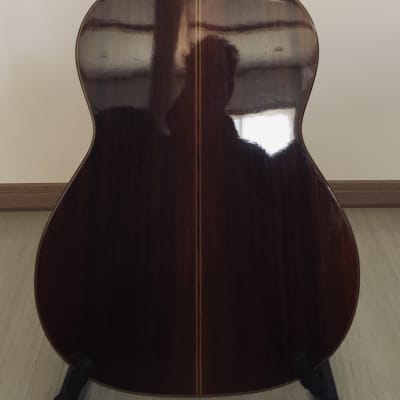
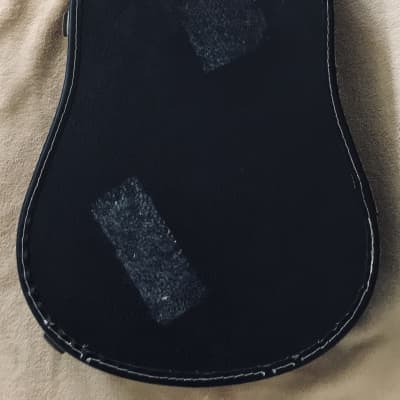
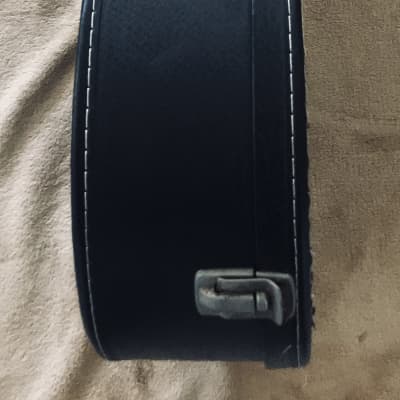
Japanese luthier built guitars from the late 1960s to the mid 1980s were of exceptional quality. Many of these luthiers operated small shops with anywhere from one or two master builders to perhaps 15-20 master craftsmen. Bans on certain types of wood were not yet in place, thus allowing these craftsmen to source incredibly high quality wood to build their creations. Additionally, many of the top names in Japanese guitar building were trained either in Spain or under Spanish master builders in Japan. There is no doubt that these guitars are a bargain in today's market, but locating top quality Japanese classical guitars from this era is not always easy. I do my best to make some of these guitars available at a reasonable price. Guitars built using similar materials in today's market will cost you far more than what you pay for a guitar from the golden era of Japanese classical guitars due to the scarcity or complete bans on certain types of wood. Please have a look at what I have to offer and feel free to contact me if you would like additional information about any of these guitars.
In the late 1960, Juan Orozco and Masaru Kohno set up an elite shop under the aegis of Takamine, and called the line Aranjuez, and these guitars, which eventually evolved into today's Hirade line, are considered among the very best guitars Takamine ever made. They are, for example, better by a mile than the C132, 136, and 140.They came in three models, 4, 5 and 6. All had the same bracing and plantilla; the only differences were in cosmetic details and wood grade selection.
Orozco and Kohno developed the designs and a few were inspected by Kohno (distinguished by "Kohno" in an oval on the label) and a very few have Kohno's red stamp, designating that he had built the top.
But the whole point of the shop--and Japanese luthiery at that time and ever since--was that any guitar bearing a particular model number was as close to any other. Starting in 1978, the Kohno stamp was no longer used on Aranjuez guitars, even though their production was still closely supervised by Masaru Kohno’s workshop. Though this was built in 1978, it is in effect, the same as the earlier model 5s.
This one has some cosmetic flaws and a repaired crack (see photo 6), but no loose braces or anything to compromise the sound, playability, structural integrity or potential longevity. Other than showing some use (which I, for one, happen to really like), it has some scratches on the soundboard and sides and a pretty good ding to the back of the headstock (see photos). Other than that, no issues of particular importance.
All solid wood: Very high grade Cedar top; body is the kind of Indian Rosewood that reflects how much better Rosewood of that vintage is compared to that used today; Ebony fretboard. Bone nut and saddle; fancy rosette and tie block; inner heel is a Spanish "lady's slipper." Very rare for even better Japanese guitars.
654/52mm String length (nut to saddle) and nut width. Action is standard Classical conservatory (4mm on low E 12th fret).
And the sound is profound: good spectrum, big tight bottom, warm.
This guitar comes with a vintage hard shell case which, as far as those go, is decent--still has nice soft lining. It's old but great for shipping and storage.
I pack all the guitars I ship extremely well to avoid any issue during transit.
Guitars from this era are superior in quality in almost all respects to the guitars being produced today.
I offer vintage Japanese instruments from the golden era of Japanese classical guitar building. Guitars that range in age from 20 - 50 years are going to have cosmetic flaws that comes with age and use. In most cases, this does not affect the sound or playability of the guitar, but gives today's guitar enthusiast an opportunity to own one of these amazing creations at a reasonable price when compared to the factory built instruments being cranked out of China and other countries that have little to no concern about what a guitar can and should sound like. That come with experience, the kind of experience that the great Japanese luthiers acquired and perfected.
Reverb Buyer Protection
Reverb has your back if your item is lost, damaged, or doesn't match its description. Simply report any issues within 7 days and we'll help you get a full refund.Learn more about Reverb Buyer Protection.
| Listed | 5 years ago |
| Condition | Good (Used) Good condition items function properly but may exhibit some wear and tear.Learn more |
| Brand | |
| Model |
|
| Finish |
|
| Categories | |
| Year |
|
| Made In |
|
| Body Shape |
|
